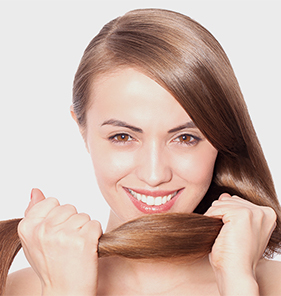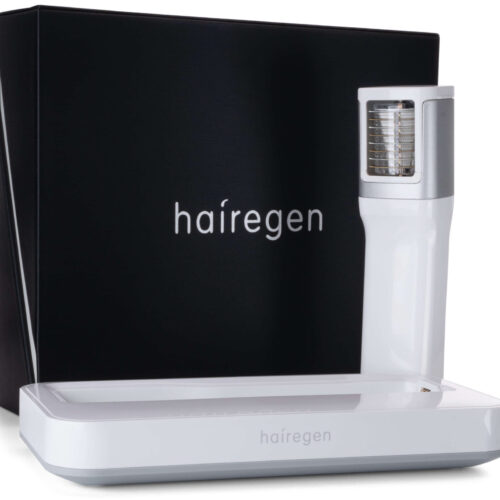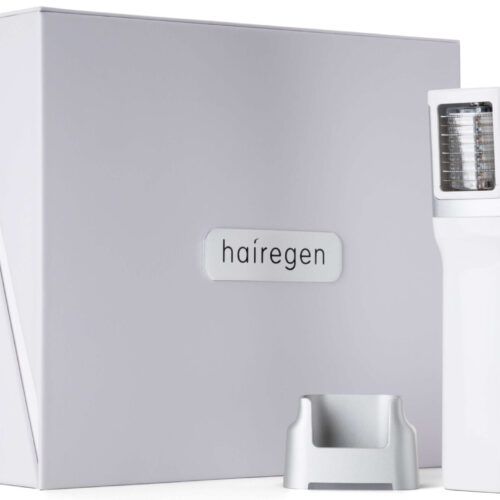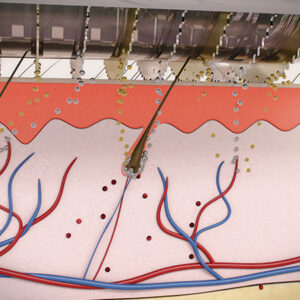Female pattern baldness, also known as androgenetic alopecia, is a common condition affecting women, particularly after menopause. This progressive hair loss typically begins with thinning at the crown and along the part line. Unlike sudden hair shedding caused by stress or illness, female pattern baldness develops gradually over time.
The condition results from a combination of genetic predisposition and hormonal changes. As women age, especially after menopause, shifts in hormone levels can cause hair follicles to shrink. This leads to thinner, shorter hairs and eventually, cessation of hair growth in affected areas.
While not physically harmful, female pattern baldness can significantly impact a woman’s self-esteem and quality of life. Many women report feeling less confident and attractive as their hair thins. Fortunately, various treatment options exist, ranging from at-home remedies to medical interventions.
Understanding the nature of female pattern baldness is crucial for effective management. It’s important to recognize that this condition differs from other forms of hair loss, such as telogen effluvium, which is often temporary and caused by stress or nutritional deficiencies. Female pattern baldness is a chronic condition that requires ongoing treatment to maintain results.
Early detection and intervention are key in managing female pattern baldness. Women who notice increased hair shedding, a widening part, or overall thinning should consult with a healthcare provider. A thorough evaluation can rule out other potential causes of hair loss and guide appropriate treatment strategies.

Causes and Risk Factors
The development of female pattern baldness involves a complex interplay of genetic, hormonal, and environmental factors. Understanding these underlying causes can help in developing effective treatment strategies and preventive measures.
Genetic Predisposition
A strong genetic component underlies female pattern baldness. Women with a family history of hair loss, particularly among first-degree relatives, are at higher risk. The inheritance pattern is polygenic, meaning multiple genes contribute to the condition. These genes influence hair follicle sensitivity to hormones and the hair growth cycle.
Hormonal Imbalances
Hormonal changes play a significant role in female pattern baldness. The condition is often associated with an increase in androgens, particularly dihydrotestosterone (DHT). DHT can cause hair follicles to shrink, leading to thinner, shorter hairs. Post-menopausal women are especially susceptible due to the decline in estrogen levels, which normally counteract the effects of androgens on hair follicles.
Age-Related Factors
As women age, the likelihood of developing female pattern baldness increases. The cumulative effects of hormonal changes, environmental stressors, and natural aging processes on hair follicles contribute to this increased risk. After menopause, about two-thirds of women experience noticeable hair thinning or loss.
Medical Conditions
Certain medical conditions can exacerbate or trigger female pattern baldness. Polycystic ovary syndrome (PCOS), thyroid disorders, and autoimmune diseases can all impact hair growth. These conditions often cause hormonal imbalances that affect the hair growth cycle.
Lifestyle and Environmental Factors
While not primary causes, lifestyle factors can influence the progression of female pattern baldness. Chronic stress, poor nutrition, and certain hairstyling practices can contribute to hair thinning. Environmental factors such as pollution and UV radiation may also play a role in damaging hair and accelerating loss.
Medications and Treatments
Some medications and medical treatments can contribute to hair loss. Chemotherapy, certain antidepressants, and blood pressure medications are known to cause hair thinning. In some cases, this hair loss is temporary and resolves after discontinuing the medication.
Understanding these causes and risk factors is crucial for developing a comprehensive approach to treating female pattern baldness. By addressing underlying hormonal imbalances, managing stress, and adopting a healthy lifestyle, women can often slow the progression of hair loss and improve overall hair health.
Diagnosing Female Pattern Baldness
Accurate diagnosis is crucial for effective treatment of female pattern baldness. Healthcare providers use a combination of methods to distinguish this condition from other forms of hair loss and determine its severity.
Clinical Examination
The first step in diagnosis involves a thorough scalp examination. A healthcare provider will assess the pattern of hair loss, looking for characteristic signs such as widening of the part line and thinning at the crown. They may use a tool called a densitometer to measure hair density in different areas of the scalp.
Medical History Review
A comprehensive medical history is essential for diagnosis. The healthcare provider will inquire about the onset and progression of hair loss, family history of baldness, and any recent life changes or stressors. They’ll also review current medications and treatments that might contribute to hair loss.
Scalp Biopsy
In some cases, a scalp biopsy may be necessary to confirm the diagnosis. This involves removing a small sample of scalp tissue for microscopic examination. The biopsy can reveal miniaturization of hair follicles, a hallmark of female pattern baldness.
Blood Tests
Blood tests may be ordered to rule out other causes of hair loss. These tests can check for thyroid disorders, iron deficiency, and hormonal imbalances that might contribute to hair thinning.
Trichoscopy
Trichoscopy is a non-invasive diagnostic technique that uses a special magnifying device to examine the scalp and hair shafts in detail. This method can reveal early signs of female pattern baldness, such as hair shaft diameter variability and the presence of vellus hairs.
Pull Test
The pull test is a simple diagnostic tool used to assess active hair shedding. The healthcare provider gently pulls on a small section of hair to see how many strands come out. Excessive shedding may indicate active hair loss.
Photographic Documentation
Taking photographs of the scalp at regular intervals can help track the progression of hair loss over time. This visual documentation is valuable for monitoring treatment effectiveness.
Genetic Testing
While not routinely used, genetic testing can sometimes be helpful in assessing an individual’s risk for female pattern baldness. This may be particularly useful for younger women considering preventive treatments.
Accurate diagnosis is crucial for developing an effective treatment plan. It helps distinguish female pattern baldness from other forms of hair loss that may require different approaches. Once diagnosed, women can explore various treatment options, including at-home remedies and medical interventions, to manage their condition effectively.
Conventional Medical Treatments
While home remedies can be effective for some, many women with female pattern baldness benefit from conventional medical treatments. These interventions, prescribed by healthcare professionals, target the underlying causes of hair loss and can often produce significant improvements.
Topical Minoxidil
Minoxidil is a widely used over-the-counter medication for female pattern baldness. Available in 2% and 5% solutions or foams, it’s applied directly to the scalp. Minoxidil works by prolonging the growth phase of hair follicles and increasing blood flow to the scalp. Regular use can lead to hair regrowth and decreased hair loss in many women.
Oral Medications
Certain oral medications can be prescribed to treat female pattern baldness:
- Finasteride: While primarily used for male pattern baldness, some doctors prescribe low-dose finasteride off-label for women. It works by blocking the conversion of testosterone to DHT.
- Spironolactone: This anti-androgen medication can be effective in women with hormonal imbalances contributing to hair loss.
- Oral minoxidil: In some cases, low-dose oral minoxidil may be prescribed, especially for women who don’t respond to topical treatments.
Hormone Therapy
For post-menopausal women, hormone replacement therapy may help slow hair loss. Estrogen and progesterone supplements can counteract the effects of androgens on hair follicles. However, this treatment must be carefully monitored due to potential side effects.
Platelet-Rich Plasma (PRP) Therapy
PRP therapy involves injecting a concentration of a patient’s own platelets into the scalp. This treatment is thought to stimulate hair growth by increasing blood supply to hair follicles and prolonging the anagen (growth) phase of the hair cycle.
Low-Level Laser Therapy
Low-level laser therapy uses red light to stimulate hair growth. This can be administered in a clinical setting or through at-home devices. The treatment is thought to increase blood flow to the scalp and stimulate metabolism in hair follicles.
Hair Transplantation
For advanced cases of female pattern baldness, hair transplantation may be an option. This surgical procedure involves moving hair follicles from areas of dense growth to thinning areas. Modern techniques can produce natural-looking results, but the procedure is invasive and can be costly.
Scalp Micropigmentation
This cosmetic procedure involves tattooing pigment into the scalp to create the appearance of a fuller head of hair. It’s particularly useful for camouflaging thinning areas and can be combined with other treatments.
Ketoconazole Shampoo
Prescription-strength ketoconazole shampoo may be recommended as part of a hair loss treatment regimen. It has anti-androgenic properties and can help reduce scalp inflammation, which may contribute to hair loss.
When considering conventional medical treatments, it’s important to consult with a healthcare provider or dermatologist specializing in hair loss. These professionals can provide personalized treatment plans based on the severity of hair loss, overall health, and individual preferences. Many women find that a combination of treatments yields the best results in managing female pattern baldness.
Nutritional Approaches
Proper nutrition plays a crucial role in maintaining healthy hair and potentially slowing the progression of female pattern baldness. A balanced diet rich in specific nutrients can support hair growth and overall scalp health.
Essential Nutrients for Hair Health
Several key nutrients are vital for maintaining healthy hair:
- Protein: Hair is primarily made of protein, making adequate intake crucial. Lean meats, fish, eggs, and plant-based sources like legumes and nuts are excellent protein sources.
- Iron: Iron deficiency can lead to hair loss. Include iron-rich foods like spinach, lentils, and red meat in your diet.
- Vitamin C: This vitamin aids in iron absorption and collagen production. Citrus fruits, berries, and bell peppers are good sources.
- Biotin: While biotin deficiency is rare, this B-vitamin is important for hair health. It’s found in eggs, nuts, and whole grains.
- Omega-3 fatty acids: These healthy fats support scalp health. Fatty fish, flaxseeds, and walnuts are rich in omega-3s.
- Vitamin D: Low vitamin D levels have been linked to hair loss. Sunlight exposure and foods like fatty fish and egg yolks provide vitamin D.
- Zinc: This mineral is crucial for hair tissue growth and repair. Oysters, beef, and pumpkin seeds are good zinc sources.
Balanced Diet for Hair Growth
A Mediterranean-style diet, rich in fruits, vegetables, whole grains, and lean proteins, can provide many of the nutrients necessary for healthy hair. This eating pattern is also associated with reduced inflammation, which may benefit scalp health.
Supplements for Hair Health
While it’s best to obtain nutrients from food, supplements can be beneficial in cases of deficiency:
- Multivitamin: A high-quality multivitamin can help fill nutritional gaps.
- Iron supplements: For women with confirmed iron deficiency.
- Biotin supplements: While evidence is mixed, some women report improved hair growth with biotin supplementation.
- Omega-3 supplements: Fish oil or algae-based supplements can provide additional omega-3s.
Hydration for Scalp Health
Proper hydration is essential for overall health, including scalp and hair health. Aim for at least 8 glasses of water daily. Herbal teas and water-rich fruits and vegetables can also contribute to hydration.
Foods to Limit
Certain foods may negatively impact hair health:
- Processed foods: High in unhealthy fats and sugars, these can contribute to inflammation.
- Excessive alcohol: Can lead to nutrient deficiencies and dehydration.
- High-mercury fish: While fish is generally healthy, some types high in mercury should be limited.
Meal Planning for Hair Health
Incorporating hair-healthy foods into your diet doesn’t have to be complicated. Here’s a sample day of meals:
- Breakfast: Oatmeal with berries and nuts
- Lunch: Spinach salad with grilled chicken and pumpkin seeds
- Dinner: Baked salmon with quinoa and roasted vegetables
- Snacks: Greek yogurt with flaxseeds, or carrot sticks with hummus
While nutrition alone may not reverse female pattern baldness, a balanced diet rich in hair-supporting nutrients can contribute to overall hair health and potentially slow the progression of hair loss. Combined with other treatments, proper nutrition forms an essential part of a comprehensive approach to managing female pattern baldness.

Lifestyle Modifications
Adopting certain lifestyle changes can significantly impact the health of your hair and potentially slow the progression of female pattern baldness. These modifications, when combined with other treatments, can contribute to an overall strategy for managing hair loss.
Stress Management
Chronic stress can exacerbate hair loss. Implementing stress-reduction techniques can be beneficial:
- Meditation and mindfulness practices
- Regular exercise
- Adequate sleep (7-9 hours per night)
- Yoga or tai chi
- Deep breathing exercises
- Engaging in hobbies and leisure activities
Gentle Hair Care Practices
Proper hair care can prevent unnecessary damage and breakage:
- Use a wide-toothed comb to detangle wet hair gently
- Avoid tight hairstyles that pull on the hair
- Limit use of heat styling tools
- Choose sulfate-free, gentle shampoos
- Use a silk or satin pillowcase to reduce friction
Scalp Care
A healthy scalp provides a better environment for hair growth:
- Regular scalp massages to improve blood circulation
- Use of scalp exfoliants to remove dead skin cells
- Maintaining proper scalp hygiene
- Protecting the scalp from sun damage with hats or SPF products
Exercise and Physical Activity
Regular exercise can improve overall health and potentially benefit hair growth:
- Cardiovascular exercises to improve blood circulation
- Strength training to support hormone balance
- Yoga poses that increase blood flow to the scalp
Avoiding Harmful Habits
Certain habits can contribute to hair damage and loss:
- Quit smoking, as it can damage hair follicles and affect circulation
- Limit alcohol consumption, which can lead to nutrient deficiencies
- Avoid crash diets, which can cause nutritional imbalances
Environmental Protection
Protecting your hair from environmental stressors can help maintain its health:
- Wear a hat or use UV-protective products when exposed to strong sunlight
- Use a swim cap in chlorinated pools
- Protect hair from harsh winds and extreme temperatures
Sleep Hygiene
Good sleep is crucial for overall health, including hair health:
- Maintain a consistent sleep schedule
- Create a relaxing bedtime routine
- Ensure your bedroom is dark, quiet, and cool
Hormonal Balance
For women experiencing hormonal imbalances, working with a healthcare provider to address these issues can be beneficial:
- Regular check-ups to monitor hormone levels
- Discussing hormone replacement therapy options if appropriate
- Managing conditions like PCOS that can affect hair health
Hydration
Proper hydration is essential for hair and scalp health:
- Aim for at least 8 glasses of water daily
- Include hydrating foods in your diet
- Limit caffeine and alcohol intake, which can be dehydrating
By implementing these lifestyle modifications, women can create an environment that supports hair health and potentially slows the progression of female pattern baldness. It’s important to remember that these changes work best when combined with other treatments and should be part of a comprehensive approach to managing hair loss.
Natural and Herbal Remedies
Many women seek natural and herbal remedies as part of their approach to managing female pattern baldness. While scientific evidence for some of these treatments is limited, many have been used traditionally for hair health. It’s important to consult with a healthcare provider before starting any new treatment regimen.
Essential Oils
Certain essential oils are believed to promote hair growth and scalp health:
- Rosemary oil: May improve cellular generation and increase circulation
- Peppermint oil: Can stimulate the scalp and potentially promote hair growth
- Lavender oil: Known for its stress-reducing properties and potential to improve hair growth
- Tea tree oil: Has antimicrobial properties that can benefit scalp health
To use: Mix a few drops of essential oil with a carrier oil like coconut or jojoba oil. Massage into the scalp and leave for 30 minutes before washing.
Herbal Infusions
Herbal teas and infusions can be applied topically or consumed:
- Green tea: Rich in antioxidants that may promote hair growth
- Saw palmetto: May help block DHT, a hormone associated with hair loss
- Ginseng: Can stimulate hair follicles and promote hair growth
- Horsetail: Contains silica, which may strengthen hair
To use: Brew strong herbal teas and apply cooled to the scalp, or drink regularly as part of a healthy diet.
Ayurvedic Remedies
Ayurvedic medicine offers several treatments for hair health:
- Bhringraj oil: Traditionally used to prevent hair loss and premature graying
- Amla (Indian gooseberry): Rich in vitamin C and antioxidants
- Fenugreek seeds: Can nourish hair follicles and promote growth
To use: Apply Ayurvedic oils to the scalp or create masks using powdered herbs mixed with water or yogurt.
Scalp Treatments
Natural scalp treatments can improve overall scalp health:
- Aloe vera: Has moisturizing and anti-inflammatory properties
- Onion juice: May improve circulation to hair follicles
- Apple cider vinegar: Can help balance scalp pH and remove buildup
To use: Apply these treatments directly to the scalp, leave for 15-30 minutes, then rinse thoroughly.
Dietary Supplements
Certain natural supplements may support hair health:
- Biotin: A B-vitamin that supports healthy hair growth
- Collagen: Can provide amino acids necessary for hair building
- Omega-3 fatty acids: Support overall hair health
- Zinc: Important for hair tissue growth and repair
Always consult a healthcare provider before starting any new supplement regimen.
Traditional Chinese Medicine
Traditional Chinese Medicine (TCM) approaches hair loss holistically:
- He Shou Wu: An herb believed to nourish the blood and benefit hair
- Goji berries: Rich in antioxidants and traditionally used for hair health
- Acupuncture: May improve blood flow to the scalp
Consult a licensed TCM practitioner for personalized treatment.
Natural Masks and Treatments
Homemade hair masks can nourish the scalp and hair:
- Egg mask: Rich in protein and nutrients
- Avocado and olive oil mask: Provides healthy fats and vitamins
- Coconut milk treatment: Can moisturize and nourish hair
To use: Apply masks to clean, damp hair, leave for 30 minutes, then rinse thoroughly.
While natural and herbal remedies can be a gentle way to support hair health, it’s important to remember that they may not be as potent as medical treatments for female pattern baldness. These remedies work best as part of a comprehensive approach that includes proper nutrition, stress management, and appropriate medical treatments when necessary. Always inform your healthcare provider about any natural remedies you’re using to ensure they don’t interact with other treatments or medications.
Best selling hair growth products:
Hairegen Device for Female Pattern Baldness Treatment
The Hairegen device represents an innovative approach to treating female pattern baldness, offering a non-invasive, at-home solution for hair regrowth. This advanced technology harnesses the power of low-level laser therapy (LLLT) to stimulate hair follicles and promote hair growth.
How Hairegen Works
Hairegen utilizes specific wavelengths of red light to penetrate the scalp and stimulate hair follicles. This process, known as photobiomodulation, is believed to:
- Increase blood flow to the scalp
- Stimulate cellular metabolism in hair follicles
- Enhance the production of ATP (adenosine triphosphate), providing energy to hair cells
- Reduce inflammation in the scalp
The device is designed for convenient, regular use at home, typically requiring sessions of 15-30 minutes, several times a week.
Benefits of Hairegen
- Non-invasive treatment: No needles, surgery, or chemicals involved
- Painless application: Users report no discomfort during treatment
- Convenience: Can be used in the comfort of your own home
- No known side effects: Unlike some medications, LLLT has minimal risk of adverse reactions
- Suitable for various stages of hair loss: Can be effective for mild to moderate female pattern baldness
Clinical Evidence
Several studies have shown promising results for LLLT in treating female pattern baldness:
- A 2014 study published in the American Journal of Clinical Dermatology found that LLLT devices increased hair count in both men and women with androgenetic alopecia
- A 2013 randomized, double-blind study showed significant improvement in hair density and overall hair growth in women using LLLT devices
Using Hairegen Effectively
To maximize the benefits of Hairegen:
- Clean and dry your scalp before each treatment
- Use the device as directed, typically 3-4 times per week
- Be consistent with treatments for best results
- Combine with other hair care practices for comprehensive treatment
- Track progress with photos and hair counts
Combining Hairegen with Other Treatments
Hairegen can be effectively combined with other treatments for female pattern baldness:
- Topical medications like minoxidil
- Nutritional supplements
- Scalp care routines
- Stress reduction techniques
Always consult with a healthcare provider before combining treatments to ensure safety and efficacy.
Considerations and Limitations
While Hairegen offers a promising treatment option, it’s important to note:
- Results may vary among individuals
- Consistent, long-term use is necessary for maintaining results
- It may not be suitable for all types or stages of hair loss
- The device represents an investment, and cost may be a factor for some users
The Hairegen device presents an exciting option in the realm of female pattern baldness treatment. Its non-invasive nature and ease of use make it an attractive choice for many women seeking to address hair loss. As with any treatment, it’s crucial to consult with a healthcare provider to determine if Hairegen is suitable for your specific case of female pattern baldness.
Psychological Impact and Coping Strategies
Female pattern baldness can have a significant psychological impact on those affected. Hair is often closely tied to a woman’s sense of identity, femininity, and self-esteem. Addressing the emotional aspects of hair loss is crucial for overall well-being and can positively influence the effectiveness of physical treatments.
Emotional Challenges
Women experiencing hair loss may face various emotional challenges:
- Decreased self-esteem and confidence
- Anxiety about appearance
- Depression or mood changes
- Social withdrawal
- Stress about the progression of hair loss
- Feelings of loss of control or femininity
Coping Strategies
Developing effective coping strategies is essential for managing the psychological impact of female pattern baldness:
Seek Professional Support
- Consider counseling or therapy to address emotional concerns
- Join support groups for women experiencing hair loss
- Consult with a trichologist or dermatologist specializing in hair loss
Education and Empowerment
- Learn about the causes and treatments for female pattern baldness
- Stay informed about new research and treatment options
- Take an active role in your treatment plan
Positive Self-Talk and Affirmations
- Practice self-compassion and positive self-talk
- Focus on your strengths and positive attributes beyond physical appearance
- Use affirmations to boost self-esteem
Stress Management Techniques
- Practice mindfulness and meditation
- Engage in regular exercise
- Try relaxation techniques like deep breathing or progressive muscle relaxation
Explore Styling Options
- Experiment with different hairstyles that can camouflage thinning areas
- Consider wigs, hairpieces, or hair extensions as temporary or long-term solutions
- Learn about scalp micropigmentation or other cosmetic procedures
Connect with Others
- Share your experiences with trusted friends and family
- Join online communities or forums for women with hair loss
- Attend local support group meetings
Focus on Overall Health and Well-being
- Maintain a balanced diet and exercise routine
- Prioritize sleep and self-care
- Engage in activities and hobbies that bring joy and fulfillment
Reframe Perspectives
- Challenge societal beauty standards
- Embrace diverse definitions of beauty and femininity
- Find role models who embody confidence despite hair loss
Building Resilience
Developing resilience can help women better cope with the challenges of female pattern baldness:
- Practice acceptance of the situation while actively working on solutions
- Cultivate a growth mindset, viewing challenges as opportunities for personal development
- Build a strong support network of friends, family, and professionals
- Set realistic goals and celebrate small victories in your hair loss journey
Communication Strategies
Open communication about hair loss can be therapeutic:
- Be honest with loved ones about your feelings and experiences
- Educate others about female pattern baldness to increase understanding and support
- Prepare responses for questions or comments about your hair loss
Self-Care Practices
Engaging in self-care can boost overall well-being:
- Pamper yourself with spa days or relaxing activities
- Invest in quality skincare and makeup to enhance overall appearance
- Explore new fashion styles that boost confidence
Professional Image Considerations
For women concerned about their professional image:
- Consult with an image consultant for workplace-appropriate solutions
- Communicate with employers if hair loss is affecting work performance or comfort
- Know your rights regarding workplace discrimination related to appearance
By addressing the psychological aspects of female pattern baldness alongside physical treatments, women can develop a more holistic approach to managing their condition. Remember that seeking support and developing coping strategies are signs of strength, not weakness. With the right mindset and support system, many women find ways to thrive and maintain their confidence despite hair loss challenges.
Future Treatments and Research
The field of hair loss treatment is rapidly evolving, with ongoing research offering hope for more effective solutions for female pattern baldness. Scientists and medical professionals are exploring various avenues to develop new treatments and improve existing ones.
Stem Cell Therapy
Stem cell research holds significant promise for hair restoration:
- Researchers are investigating ways to use stem cells to regenerate hair follicles
- Studies are exploring the potential of dermal papilla cells, which play a crucial role in hair growth
- Early clinical trials have shown promising results in stimulating new hair growth
Gene Therapy
Advances in genetic research may lead to targeted treatments:
- Scientists are identifying genes associated with hair loss
- Gene therapy could potentially correct genetic factors contributing to female pattern baldness
- Research is ongoing to develop safe and effective methods for gene modification in hair follicles
Advanced Drug Therapies
New medications are being developed to target the underlying causes of hair loss:
- JAK inhibitors, originally developed for autoimmune conditions, show potential for treating various forms of hair loss
- Prostaglandin analogs are being studied for their ability to stimulate hair growth
- Research into androgen receptor antagonists continues, aiming to block the effects of DHT on hair follicles
Exosome Therapy
Exosomes, tiny vesicles released by cells, are being explored for hair restoration:
- These vesicles can carry growth factors and genetic material to stimulate hair follicles
- Early studies suggest exosome therapy could promote hair growth and improve hair thickness
3D Printing Technology
Advancements in 3D printing may revolutionize hair restoration:
- Researchers are exploring ways to 3D print hair follicles
- This technology could potentially provide unlimited hair for transplantation
Improved Topical Treatments
Next-generation topical treatments are in development:
- Enhanced formulations of minoxidil for better absorption and efficacy
- Novel compounds targeting specific pathways in hair growth and loss
Combination Therapies
Research is focusing on combining different treatment modalities:
- Integrating medications with low-level laser therapy for synergistic effects
- Combining PRP therapy with other treatments to enhance results
Personalized Medicine Approaches
The future of hair loss treatment may involve highly personalized therapies:
- Genetic testing to determine the most effective treatments for each individual
- Customized treatment plans based on specific causes and patterns of hair loss
Microbiome Research
Studies are exploring the role of the scalp microbiome in hair health:
- Understanding how the balance of microorganisms on the scalp affects hair growth
- Developing probiotic treatments to promote a healthy scalp environment
Nanotechnology
Nanotechnology may offer new possibilities for hair loss treatment:
- Nanoparticles could improve the delivery of hair growth compounds to follicles
- Nano-sized sensors might allow for real-time monitoring of hair and scalp health
Ongoing Clinical Trials
Numerous clinical trials are underway, testing new treatments for female pattern baldness:
- Phase III trials for novel medications
- Studies on combination therapies and optimized treatment protocols
- Investigations into the long-term efficacy and safety of emerging treatments
While many of these treatments are still in the research phase, they offer hope for more effective solutions in the future. As research progresses, women with female pattern baldness may have access to a wider range of treatment options tailored to their specific needs.
It’s important for individuals experiencing hair loss to stay informed about these developments and consult with healthcare providers about emerging treatments. Participating in clinical trials, when appropriate, can also contribute to the advancement of hair loss treatments.
The future of female pattern baldness treatment looks promising, with potential for more effective, personalized, and less invasive solutions. As research continues, the hope is that women will have access to treatments that not only stop hair loss but also effectively restore hair growth and confidence.
Conclusion
Female pattern baldness is a complex condition that affects millions of women worldwide. While it can be emotionally challenging, understanding the condition and exploring various treatment options can empower women to take control of their hair health.
This comprehensive guide has covered a wide range of topics, from understanding the causes and diagnosis of female pattern baldness to exploring both conventional and alternative treatment options. We’ve discussed the importance of nutrition, lifestyle modifications, and psychological support in managing hair loss.
Key takeaways include:
- Early detection and intervention are crucial for effective management of female pattern baldness.
- A multifaceted approach, combining medical treatments, lifestyle changes, and natural remedies, often yields the best results.
- Nutritional support and stress management play significant roles in maintaining hair health.
- Emerging technologies like the Hairegen device offer promising non-invasive treatment options.
- Addressing the psychological impact of hair loss is as important as treating its physical aspects.
- Ongoing research in areas like stem cell therapy and personalized medicine offers hope for more effective future treatments.
Remember, every woman’s experience with hair loss is unique, and what works for one may not work for another. It’s essential to consult with healthcare professionals to develop a personalized treatment plan that addresses your specific needs and concerns.
As research continues to advance, new and improved treatments for female pattern baldness are likely to emerge. Staying informed about these developments and maintaining open communication with healthcare providers can help women make the best decisions for their hair health.
Ultimately, while female pattern baldness can be challenging, it doesn’t define a woman’s worth or beauty. With the right approach, support, and treatment, many women find ways to manage their hair loss effectively and maintain their confidence and well-being.





